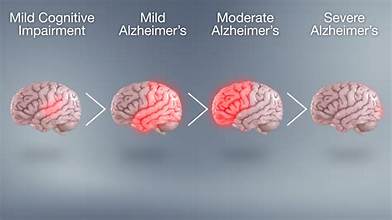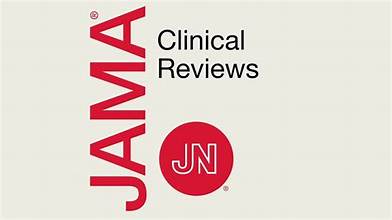Measles is a highly contagious viral infection that has affected humans for centuries. Despite the availability of safe and effective vaccines, measles remains a global health concern, especially in areas with low vaccination coverage. The disease is caused by the measles virus, which spreads rapidly through coughing, sneezing, or close contact with an infected person.
One of the most recognizable signs of measles is the measles rash, but the infection also comes with high fever, cough, runny nose, and red watery eyes. While most people recover, measles can lead to severe complications such as pneumonia, encephalitis (brain swelling), or even death, particularly in children and individuals with weakened immune systems.
In this article, we will discuss in detail the causes, symptoms, treatment, and prevention of measles to help you understand the disease and protect yourself and your family.
What Is Measles?
Measles is a viral illness caused by the rubeola virus, belonging to the paramyxovirus family. It is one of the most contagious diseases known to humans. According to the World Health Organization (WHO), one infected person can spread measles to 90 percent of non immune individuals who are close to them.
The infection typically lasts seven to fourteen days, and the hallmark sign is the measles rash, which appears a few days after the first symptoms. Measles can be prevented almost entirely through vaccination, yet outbreaks continue in regions where vaccine coverage is low.
Causes of Measles:
Measles is caused by the measles virus, which spreads through:
- Airborne droplets released when an infected person coughs or sneezes.
- Direct contact with nasal or throat secretions.
- Contaminated surfaces where the virus can survive for several hours.
The virus enters the body through the respiratory tract or eyes and then spreads to the bloodstream, eventually reaching various organs.
Risk factors include:
- Lack of vaccination which is the most common cause.
- Traveling to or living in regions with measles outbreaks.
- Weakened immune systems such as in HIV patients or malnourished children.
Symptoms of Measles:
Symptoms usually appear ten to fourteen days after exposure to the virus. Measles progresses in stages.
Early Symptoms:
- High fever often above 104°F or 40°C.
- Persistent cough.
- Runny nose also called coryza.
- Red watery eyes also called conjunctivitis.
- Koplik spots which are small white spots with bluish centers inside the mouth, a unique sign of measles.
Measles Rash:
- Appears three to five days after symptoms begin.
- Starts on the face and behind the ears.
- Spreads downward to the neck, trunk, arms, legs, and feet.
- Rash usually lasts five to six days before fading.
Other Symptoms:
- Fatigue.
- Irritability.
- Loss of appetite.
- Sore throat.
Complications of Measles:
Although measles often resolves, it can cause serious health problems, especially in children under five and adults over twenty.
Complications include:
- Pneumonia which is the leading cause of measles related deaths.
- Encephalitis which is swelling of the brain that can cause seizures or neurological damage.
- Severe diarrhea and dehydration.
- Ear infections which may lead to hearing loss.
- Subacute sclerosing panencephalitis (SSPE) which is a rare but fatal brain disorder that appears years later.
Diagnosis of Measles:
Doctors typically diagnose measles based on:
- Clinical symptoms such as rash, fever, and Koplik spots.
- Travel and exposure history.
- Blood tests to confirm the presence of measles antibodies IgM and IgG.
- Throat swab or urine test for viral detection.
Treatment for Measles:
There is no specific antiviral treatment for measles. The infection usually runs its course, but supportive care helps reduce symptoms and prevent complications.
Recommended Treatments:
- Fever reducers such as acetaminophen or ibuprofen for high fever and discomfort.
- Hydration through drinking fluids to prevent dehydration.
- Rest to allow the immune system to fight the virus.
- Vitamin A supplements proven to reduce measles related complications in children.
- Hospitalization for severe cases involving pneumonia or encephalitis.
Antibiotics are not effective against measles itself but may be used if bacterial infections like pneumonia develop.
Prevention of Measles:
Prevention is the most effective way to fight measles.
Measles Vaccination:
The MMR vaccine which protects against Measles, Mumps, and Rubella is the gold standard.
Two doses are recommended:
- First dose at 12 to 15 months of age.
- Second dose at 4 to 6 years of age.
- The vaccine is 97 percent effective after two doses.
Good Hygiene and Protection:
- Wash hands frequently.
- Cover mouth when coughing or sneezing.
- Avoid close contact with infected individuals.
Quarantine During Outbreaks:
- Infected persons should stay isolated for at least four days after rash onset.
- Schools and workplaces may implement temporary restrictions to stop spread.
Global Situation of Measles in 2025:
Despite major vaccination campaigns, measles outbreaks still occur worldwide, particularly in regions with low immunization rates. The WHO and UNICEF continue to push for global vaccination coverage to eliminate measles entirely.
High income countries have seen fewer cases, but outbreaks can quickly re emerge when vaccination rates drop. This highlights the importance of maintaining herd immunity.
Final Words:
Measles is a highly contagious but preventable disease. Its characteristic measles rash is only the visible part of a much more serious infection that can lead to life threatening complications. While there is no direct cure, supportive treatments and Vitamin A supplements help manage symptoms and reduce risks.
The most powerful weapon against measles remains the MMR vaccine, which provides lifelong protection for most people. By ensuring vaccination, practicing good hygiene, and raising awareness, we can move closer to a future where measles is eliminated globally.








